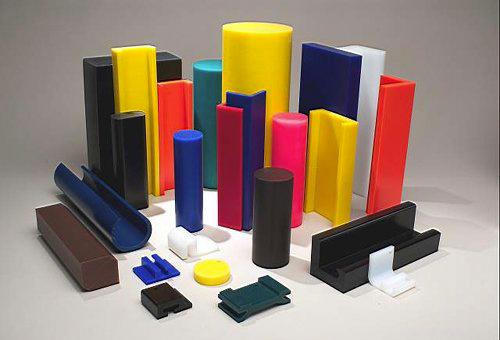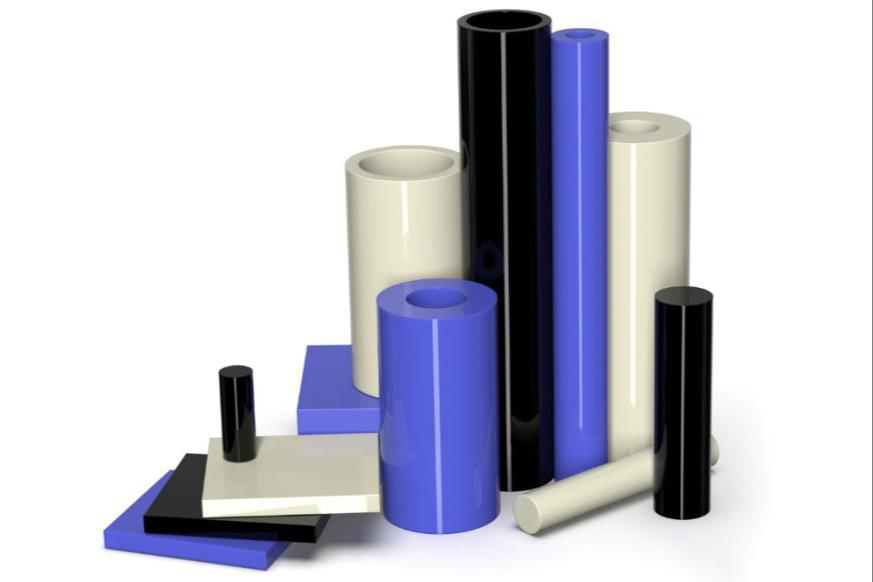1. Insulating plastic
Conductive thermoplastic compounds are divided into several types based on their electrical properties and rate of degradation. They are determined by surface resistivity, which is a way of measuring how easily charge passes through a substance. For insulating plastics, surface resistivity ranges from 1013 - 1018 ohm/sq.
The insulating properties of plastic make it a popular material for wire products, cables, conduit insulation, and protective coatings. Plastics offer high dielectric strength, thermal performance, electrical and corrosion insulation, and water and heat resistance, ideal for safe, high-performance electrical components. They provide flexibility for wire and cable applications and rigidity for conduit and enclosures. Compounds can be formulated to comply with industrial and regulatory safety standards. Hamakyu also provides insulating plastics used to make silo lining panels, machine parts used in many industries such as food production, medical equipment, electricity production... Products can include: Tivar ultra high molecular weight PE-UHMW, Polyamide - PA, Polycarbonate - PC, Polyethylene terephthalate -PET, Polyacetal - POM, Polybenzimidazole - Duratron® PBI, PI, Polyamide-imide - Duratron® PAI, PTFE, Polyetheretherketone - PEEK, Polyphenylene sulfide - Techtron® PPS, Polyphenylene sulfone - Quadrant® PPSU, Polyetherimide - PEI, Polysulfone - PSU, Fluoropolymers - PVDF...

2. Conductive plastic
Conductive materials have surface resistances below 106 ohm/sq (range 102 – 106 ohm/sq) and have decay rates measured in nanoseconds. Some types of plastic have the ability to conduct electricity such as: Ketron® LSG CA30 PEEK, Ketron® CA30 PEEK…
The electrical conductivity of the resin is achieved by adding electrically active substances. These include, but are not limited to, special types of electrical conductors such as: carbon black, carbon fibers, carbon nanotubes, or naturally derived materials.
Conductive plastics are used in storage, packaging, aerospace, medical devices, automobiles, electronics, computers and industrial equipment. Specific applications include electronics packaging, automotive fuel systems, and drain storage containers for inks and hazardous liquids. Conductive plastics are also used in medical devices such as pill dispensers...
Plastics have specific electrical properties that offer many advantages over other materials, as conductive plastics have good weather resistance, protect against thermo-mechanical stresses and have only minimal corrosion resistance. minimal.
3. Antistatic plastic
Materials considered antistatic have a surface resistivity between 105 ohm/sq and 1012 ohm/sq and allow electrical dissipation typically within microseconds. Static anti-static plastics offer many advantages over other materials because they are lighter in weight, have excellent weather resistance and provide good protection against thermo-mechanical stresses. Antistatic plastic includes many types such as: UHMW-PE (antistatic Tivar), Antistatic PEI Plastic - Semitron® ESD 410C, Antistatic PEEK Plastic - Semitron® ESD 490HR, Antistatic PEEK Plastic - Semitron® ESD 480, Semitron® MDS100 Plastic, Semitron Plastic ® MP 370, Antistatic PTFE Plastic - Semitron® ESd 500HR, Antistatic PAI Plastic Semitron® ESd 520HR, Antistatic PAI Plastic Semitron® CMP XL20, Antistatic POM Plastic - Semitron® ESd 225, PET-P Plastic antistatic - Semitron® CMP LL5.
Antistatic plastics are used to avoid static charges to protect against electrostatic discharge, they protect highly sensitive components. Antistatic plastics can also be used, greatly reducing damage or destruction of components during manufacturing. This material is also used in the mechanical industry, in conveyor technology and in the field of explosion protection. In these applications, the ability to selectively dissipate power is an important factor in preventing explosive discharges.
Static anti-static plastics offer many advantages over other materials because they are lighter in weight, have excellent weather resistance and provide good protection against thermo-mechanical stresses.







